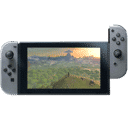
Summary:
Kirby Air Riders is set to launch on Nintendo Switch 2 on November 20, and all signs point to Bandai Namco Studios powering the experience with its new in-house SOL-AVES engine. That’s not guesswork; the engine’s logo appears in the demo’s Intellectual Property Notices, and multiple outlets have independently looked and reported the same. For players, that matters because an in-house engine can shape performance, effects, loading, and even how quickly the team can add features after launch. The warm-up is already underway with a free Global Test Ride running across two weekends in November, giving everyone a taste of online City Trial and a chance to polish handling offline. We outline what’s confirmed, translate engine talk into plain expectations for visuals and stability, and point out practical details: dates, time windows, what you need to download, and how the new tech may influence tracks, machines, and matchmaking. If you’re weighing a pre-order or penciling in play windows, you’ll find the essentials here—straightforward, verified, and focused on what actually affects your first laps.
Kirby Air Riders lands on November 20 with clear signals about tech, scope, and support
Kirby Air Riders is officially dated for November 20, 2025 on Nintendo Switch 2, positioning the pink puffball’s racer as a late-year highlight for the platform. That date shows up on regional Nintendo storefront listings and has been reiterated across coverage since its reveal. Timing matters here because it aligns with an active two-week demo event just ahead of launch, a common pattern for Nintendo’s competitive titles. The cadence suggests confidence: let players test servers, sample core handling, and start building habits before launch day. It also frames expectations for content at release—tracks, modes, and online caps—while leaving room for updates if the test flags bottlenecks. With online racing planned up to sixteen players in supported modes, a stable technical base becomes as important as character rosters. The combination of a fixed date, a structured Test Ride, and clear system requirements points to a team that wants you in, playing, and returning without guesswork.
What the SOL-AVES engine is and why it matters for a fast, readable racer
SOL-AVES is Bandai Namco Studios’ new in-house engine designed for large-scale projects and modern pipelines, and Kirby Air Riders appears to be one of the first shipped games using it. In practical terms, a studio-owned engine lets developers prioritize exactly what their game needs: quick CPU/GPU hand-offs for physics and collision at speed, scalable effects that still read clearly in handheld play, and asset streaming that keeps pop-in down when the field spreads out. For a racer that thrives on momentum, readable silhouettes and consistent frame pacing matter more than a grab-bag of flashy tricks. Expect sane choices: stable motion clarity, restrained post-processing, and effects tuned to avoid smearing visual cues during boosts and tight turns. Because the engine is internal, toolchains for level building, lighting, and machine tuning can iterate faster, which often translates into cleaner patches and lighter updates. That’s the invisible edge of in-house tech—you feel it in flow and friction, not menus.
How we know Kirby Air Riders uses SOL-AVES: the telltale logo in the demo’s legal screens
This isn’t a rumor hanging on a forum whisper. The demo’s Intellectual Property Notices list the SOL-AVES engine by name, and multiple outlets checked the same screens and published the finding. The logo callout in legal text is as straightforward as confirmation gets, and it aligns with Bandai Namco’s earlier statements about developing an engine for open-scale projects. While legal pages aren’t flashy, they’re reliable: if an engine is listed there, it’s part of the shipped software. For readers, that means less speculation and more focus on what SOL-AVES enables—shorter loads, consistent animation timing, and audio-visual sync that helps you hit boost pads and drift gates precisely. It also hints at future titles adopting the same stack, which could benefit cross-team optimizations over time. When tech is shared, every fix has a chance to make multiple games better.
Global Test Ride windows give everyone a fair shake at online and offline practice
The Global Test Ride runs across two weekends with three daily windows each, and the download is free. You do need an active Nintendo Switch Online membership, though a free trial suffices. The format is simple: jump into online City Trial during the scheduled blocks to stress servers and matchmaking, then stay sharp between windows with offline practice. The split is clever. Online blocks concentrate players so you find full lobbies quickly, while offline keeps skill growth steady without burning data or battling ping. If your goal is to hit launch day ready, treat these windows like a time-boxed training plan. Practice clean inputs first—short, early stick movements—then layer boost timing, slipstream positioning, and machine-specific quirks. The more you lock in muscle memory now, the less you’ll fight the controls when stakes rise.
Simple prep checklist to get the most from your limited windows
Before a window opens, confirm your download, clear space on internal storage, and test your connection with another online title. Use wired or a clean 5 GHz Wi-Fi channel if possible. Inside the build, open the lessons or practice mode to set camera sensitivity and invert options to taste. For races, bind any accessibility toggles you need, then run three quiet laps to learn track cues: landmark turns, off-camber corners, and safe overtake zones. When the window starts, enter lobbies early; full rooms fill quickly and provide the best read on netcode. Between races, screenshot result screens to track improvements. After the window ends, jot down what cost you placements—late boosts, missed shortcuts, risky drafts—and build a focused list for the next session. Treat it like a sprint: short, intentional, and review-driven.
City Trial returns as the social heart—fast drafting, scavenging, and a finale that counts
City Trial’s loop puts everyone in a shared map to gather power-ups, steal machines, and harass rivals before a final event decides the winner. On paper, it sounds chaotic; in play, it’s a layered push-and-pull where timing and map knowledge win. If you’ve never played it, think of it as scavenger hunt meets last-lap showdown. The best approach is to set a simple rule for yourself: prioritize mobility and handling first, then top-speed modifiers only if you’re confident in line choice. Use ambushes to deny upgrades to frontrunners, but don’t tunnel vision—surviving to the finale in a solid machine beats being a highlight reel wreck. SOL-AVES should help here by keeping object density readable and collisions predictable. That predictability is what makes risk fun rather than frustrating.
Characters, machines, and the “feel” that makes or breaks a Kirby racer
Kirby games live and die by feel—snappy inputs, playful physics, and feedback that rewards curiosity. Early coverage points to a roster that extends beyond Kirby with familiar faces, and machines that emphasize distinct personalities rather than cookie-cutter stats. The win condition for variety isn’t just numbers; it’s how naturally you can switch styles without relearning fundamentals. Expect lightweight fliers that reward smooth arcs, bruisers that trade acceleration for stability, and all-rounders that let you focus on lines. We’d also bank on gentle aim-assist for items and projectiles, and tactile audio cues that help you time boosts without staring at UI. If you’re the type who tunes controls, start by reducing sensitivity a touch; racers often feel better when you’re nudging, not wrestling, the stick.
Performance targets to expect on Switch 2: stability first, flash second
Until final code is benchmarked, numbers are provisional, but priorities are readable. For an online-leaning racer launching alongside a test event, consistent frame pacing typically beats peak resolution. That doesn’t mean flat visuals—modern upscalers and smart material work can look crisp on a living-room TV—but it does suggest choices that favor clarity in motion: restrained motion blur, minimal post-process smear, and lighting tuned for legibility rather than drama. SOL-AVES likely streamlines world data and animation timing to keep the sensation of speed intact, especially in handheld mode. If you’re sensitive to latency, pick a controller setup with the lowest overhead and avoid extra wireless hops. The smoother your input path, the easier it is to hold clean lines when the pack squeezes.
Why in-house engines can shine in racing and action
Unlike general-purpose middleware, an internal engine can be shaped around the studio’s real bottlenecks. Need faster build times for track iteration? You design the tools. Want asset streaming that prioritizes upcoming corners over distant skyline? You write the rules. Over time, those decisions stack into a “house feel” players recognize. For Kirby Air Riders, that could mean friendlier loading, fewer hitches during dense effects, and physics that remain predictable even when items flood the screen. It’s not about chasing the most dramatic screenshot; it’s about how the game feels after 50 races when tiny delays add up. That’s where bespoke tech pays off.
How the demo’s legal pages, trademarks, and reports connect the dots
There’s a tidy chain here. Bandai Namco publicly discussed building an in-house engine for larger projects years ago. Trademarks and developer training updates followed. With Kirby Air Riders’ demo out, the SOL-AVES name appears in the legal screens, and multiple outlets have verified it independently. Even community sleuths traced the logo and matched it. When you put these pieces together, the picture is consistent: Bandai Namco Studios built SOL-AVES, trained internal teams, and is now shipping a title on it, with Kirby Air Riders looking like the public debut. For players, the benefit is less mystery and more confidence that performance and support sit on tech the studio directly controls.
Practical steps: download path, requirements, and getting ready for launch day
Grab the Global Test Ride from the Nintendo eShop listing for your region and confirm you have an active Switch Online membership. The download is lightweight compared to full games, but leave headroom for patches between weekend windows. If you plan to play docked, test your display’s game mode to cut latency. Handheld players should give the battery a full charge before online windows and consider a USB-C cable long enough to keep you plugged in if a session runs long. For launch day, pre-load as soon as it opens so you’re not stuck queueing while friends race. Keep an eye on official channels for server status updates; if the team identifies congestion or a patch, it’ll show up there first.
Quick troubleshooting notes if your scan or match won’t start
If matchmaking stalls, restart the software, then power-cycle the console’s network stack by toggling Airplane Mode on and off. Switch to a different access point if you can, and avoid busy mesh handoffs mid-race. If the download won’t begin, confirm storage space and retry from your account’s purchased items list. On day one, expect a minor title update; let it finish before trying to join friends. When in doubt, check your NAT type—Type A or B generally works best for peer-to-peer lobbies. These small checks save precious minutes during short Test Ride windows.
Where Kirby Air Riders slots in the Switch 2 lineup—and why the timing helps
Switch 2’s calendar mixes marquee staples with fresh spins, and Kirby Air Riders arrives as the system’s accessible, family-friendly racer alongside heavier hitters. Pricing appears aligned with other first-party releases, and the pre-launch Test Ride doubles as marketing that puts hands on controls rather than just eyes on trailers. Releasing in late November gives it holiday visibility while still leaving runway for patches before the busiest online weeks. If the engine debut goes smoothly, expect chatter about which Bandai Namco projects follow—fans already speculate about future fighters and action titles adopting SOL-AVES. For now, the priority is simple: good lobbies, readable racing, and a smooth path from demo to day one.
Tips for first-time riders who want quick wins without memorizing spreadsheets
Start by focusing on lines, not raw speed. Brake less by setting up corners early; gentle steering is faster than aggressive sawing. Draft long enough to build a safe overtake but bail if you’re boxed in—losing sightlines is how accidents happen. Save items for exits, not entries; stabilizing the machine as you accelerate away from a pack is worth more than chaos at the apex. In City Trial, aim for upgrade clusters on the second rotation rather than fighting everyone on the first pass. Most importantly, keep your inputs calm. Kirby racers reward flow, and flow comes from smooth decisions repeated consistently, not last-second heroics. If you’re tilting after a bad race, take a breather and run a solo lap. Clean laps beat angry ones every time.
Accessibility and comfort settings worth checking on your first boot
Look for toggle options like camera inversion, vibration strength, and any aim-assist sliders tied to items. If motion input is available for fine steering adjustments, experiment at low sensitivity; it can help with micro-corrections without dominating your control scheme. Reduce screen shake if you’re sensitive to it, and consider enlarging UI elements if the default scale feels tight in handheld mode. Comfort isn’t just kindness—it’s speed. The more comfortable your view and inputs, the faster your brain builds reliable patterns lap after lap.
Why this debut could set a template for Bandai Namco’s Switch 2 support
A clean launch using SOL-AVES on a high-visibility Nintendo project would be a strong calling card for Bandai Namco Studios. It shows the engine can ship on popular hardware, hold up under online demand, and deliver the sort of playful pacing that Kirby demands. That proof lowers risk for future teams and encourages shared improvements across projects. It also benefits players: when studios rally around a focused toolset, updates come faster and polish compounds. If Kirby Air Riders nails stability and feel, the conversation shifts from “Can the tech keep up?” to “What creative bets does it unlock?” That’s the best place for a studio to be heading into a busy platform cycle.
Conclusion
Kirby Air Riders arrives with the right ingredients: a firm date, a public test with clear windows, and a modern in-house engine that favors fluid motion over flashy distractions. The SOL-AVES confirmation in the demo’s legal pages moves the discussion from rumor to expectation: stable performance, clean inputs, and readable effects on Switch 2. Use the Test Ride to tune your setup, learn lines, and stress the servers while the team gathers data. If this debut goes to plan, launch day should feel like a continuation rather than a cold start—and that’s when a racer really clicks: when you can stop tinkering and just fly.
FAQs
- Does Kirby Air Riders use Bandai Namco’s SOL-AVES engine?
- Yes. The SOL-AVES logo appears in the demo’s Intellectual Property Notices, and multiple outlets have verified it.
- When does Kirby Air Riders release on Switch 2?
- November 20, 2025. Regional Nintendo listings and press coverage confirm the date.
- What do I need for the Global Test Ride?
- Download the free build from the eShop and have an active Nintendo Switch Online membership; a free trial works.
- How many players can race online?
- Modes highlighted in coverage support up to sixteen players online, with up to eight locally where supported.
- Will progress carry over from the Test Ride?
- Test events typically focus on server and balance checks; plan for limited carryover and watch official notes near launch for specifics.
Sources
- Kirby Air Riders appears to use Bandai Namco Studio’s new in-house engine, SOL-AVES, AUTOMATON, November 10, 2025
- Kirby Air Riders Looks To Be Powered By Bandai Namco’s New In-House Engine, Nintendo Life, November 9, 2025
- Kirby Air Riders uses Bandai Namco’s new SOL-AVES engine, GoNintendo, November 8, 2025
- Kirby™ Air Riders: Global Test Ride, Nintendo.com, November 2025
- Kirby Air Riders | Nintendo Switch 2-games, Nintendo (NL), November 2025
- Kirby Air Riders Is Coming to Switch 2, and It’s ‘Basically Like Mario Kart’, WIRED, September 2025
- Nintendo confirms Kirby Air Riders is out in November, and it’s only $70, GamesRadar+, September 2025
- Bandai Namco Studios is developing in-house game engine, AUTOMATON, February 5, 2022














